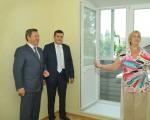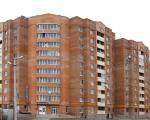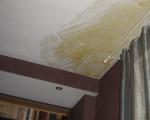How to legalize an already done redevelopment in an apartment, instructions for approval
Apartments in high-rise buildings, especially in the secondary housing market, built in the last century, have a typical layout with cramped hallways, standard rooms, small kitchens, separate and small bathrooms. Living in such conditions is not always comfortable, so many owners decide to redevelop - changes in the configuration of the living space, which must be included in the technical passport.
Many apartment owners believe that they can make any changes within their living space. Such an opinion is erroneous. The demolition of a load-bearing wall or other illegal actions can provoke a violation of the integrity of the structure of the house, lead to accidents, even death. Any change must be coordinated in the architectural department, entered into the technical passport, carried out within the framework of the law. It is best to carry out the approval procedure before the redevelopment, but it is not uncommon for the redevelopment to be legalized after the fact.
Why legitimize the redevelopment done?
The lack of coordination threatens not only with a violation of the technology for changing the configuration of living space, which entails the creation of a threat to people's lives, but also with other consequences. For unauthorized redevelopment, you will have to pay a fine. In addition, it is highly likely to receive an order demanding that the apartment be returned to its original form, failure to comply with which may cause the alienation of property.
Illegally carried out redevelopment has other consequences regarding the execution of any documents for an apartment and the implementation of other actions:
- When the living area is not privatized, in addition to a fine and an order, eviction is possible. If extreme measures are not taken, then the removal of the apartment from municipal ownership will cause many problems.
- The notary has the right to refuse to issue a certificate of inheritance in cases where title documents contain other data that differ from those presented in the technical passport.
If illegal actions were carried out in an apartment taken on credit, the bank may demand immediate repayment of the loan, motivating this by changing the area of the collateral object.
Conditions for legalizing the redevelopment of an apartment
The legality of unauthorized redevelopment can be established by administrative or judicial procedure. You can hope for a positive outcome when the configuration changes were carried out without any violations. Otherwise, the owner will have to return the apartment to its original layout. One way or another, you will have to pay the fine. In order not to obviously lose the case, having the opportunity to make adjustments, you need to familiarize yourself with what conditions must be met in order to legitimize the redevelopment in fact.
What is strictly forbidden to do?
When redevelopment of an apartment it is impossible:
- increase the plumbing unit and kitchen at the expense of any room, if at the same time they account for 25% of the total living area;
- combine a kitchen equipped not with an electric, but with a gas stove, with a room;
- reduce, dismantle, move heating radiators, water or ventilation pipes;
- move the bathroom to places where there is a living room in the lower apartment;
- expand a balcony or loggia by combining with a living room, except for the cases of arranging an arch, the width of which does not exceed one meter;
- dismantle the load-bearing wall;
- install radiators or equip underfloor heating on the balcony (loggia) with connection to the general house heating.
All of these actions are considered illegal and should not be performed when changing living space.
What is allowed to do?
When carrying out redevelopment, it is allowed:
- 1. Combine the living space with the kitchen, on which there is a gas stove, by arranging a doorway or an arch with sliding doors. This is the only way to create a kitchen-living room if it has gas equipment.
- 2. Expand the area of the bathroom at the expense of the corridor. The main thing is that the floor level of the toilet and bathroom remains three to five centimeters lower than in the room adjacent to them.
- 3. Move water equipment from the common riser by installing new pipes. The drain angle must be maintained. Otherwise, there will be a violation of the water supply of the apartment.
There is another important nuance regarding the fact that redevelopment should not worsen the existing living conditions of residents from neighboring apartments.
How not to disturb the “comfort of living” of neighbors?
Combining the kitchen space with a bathroom is allowed only in one-story buildings and on the upper floors. In other cases, the kitchen space will fall on the toilet or bathroom of the apartment from above, which should not be allowed.
The way out of the situation is the use of the corridor. Such redevelopment will not worsen the living conditions of neighbors. Here, too, there are nuances. Such an expansion of the kitchen is only permissible when the neighboring apartment below has a similar layout.
Changing the area of \u200b\u200bthe kitchen should be done in such a way that this room has at least one source of natural daylight. Light can enter the room either directly through a window or through a partition made of glass.
It is necessary to distinguish between such two concepts as “simple” and “complex” redevelopment, which have significant differences, and, therefore, the issue of legitimizing the actions taken is also different.
Simple redevelopment
It is carried out without affecting the load-bearing structures, does not make significant changes to the configuration of the living space, involves the following:
- transfer of plumbing within the premises allocated for it;
- rearrangement of electric and gas stoves;
- demolition of partitions that are not load-bearing, arranging arches (openings) in them;
- installation of light partitions.
These actions, as a rule, cannot harm the integrity of the building. Most often legalized in an administrative order.
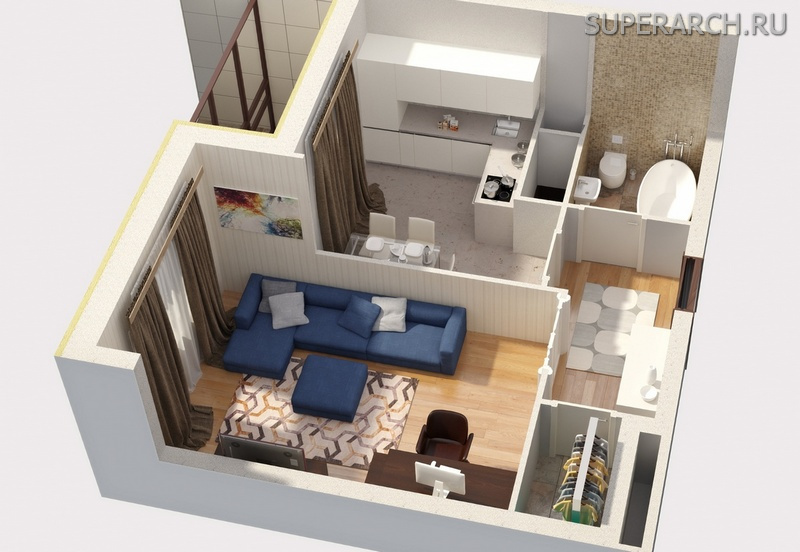
Complex redevelopment
It involves intervention in load-bearing structures, changing the configuration and changing the functional features of the premises, may include the following list of works:
- expansion of living space;
- partial dismantling of load-bearing walls;
- changing the position of the kitchen;
- combining several rooms into one;
- transfer of communications;
- arrangement of openings in load-bearing partitions;
- demolition of the window sill;
- arrangement of an additional bathroom.
These changes are very serious and require a professional approach.
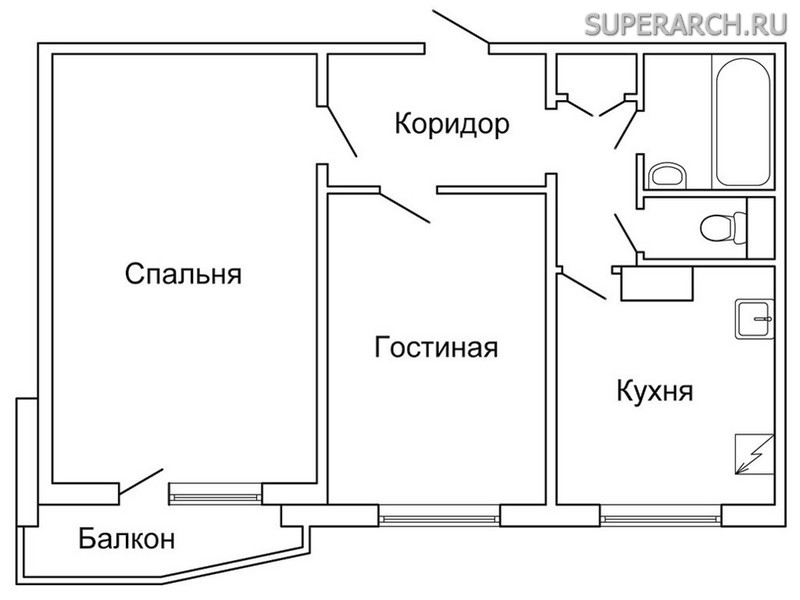
Legalization of unauthorized redevelopment
To legalize the redevelopment already carried out, it is necessary to proceed as follows:
- Consult with the department of capital construction or housing inspection;
- Order a project or make a sketch;
- Collect the required package of documents;
- Inform the authorized bodies about the redevelopment;
- Get an appropriate decision;
- File a claim with the court in case of refusal to recognize the redevelopment as legal.
Applying for a consultation requires the following list of documents:
- technical certificate;
- floor plan;
- explication - an explanation for a sketch or project.
The choice in favor of the project or sketch is determined by what kind of redevelopment was carried out. Relevant information can be obtained in consultation with housing inspectorate employees, who will be able to say exactly which document is required in a particular case, if it is not available.
Sketch remodeling
Possible when doing the following:
- installation / dismantling of non-bearing structures;
- change of window structures with an increase or decrease in their area;
- demolition / installation of a partition in the bathroom;
- laying old or arranging new openings.
When it is planned to swap plumbing equipment, permission from the housing inspectorate is required. In this case, no legal registration is required.
At the same time, materials for the construction of partitions should be light so that there is no additional load on the structure. It is permissible to use drywall, chipboard, fiberboard.
To create a sketch, changes are noted on the apartment plan. Green color marks what is planned to be erected, and red is what is supposed to be demolished.
Project redevelopment
It is carried out in cases where it is planned to carry out:
- installation of additional communications;
- installation of partitions made of heavy materials that increase the load on the structure;
- dismantling the gas stove with replacement with an electric one;
- replacement of layers in the floor device;
- change of purpose of premises;
- installation of stairs, if it is a two-level apartment.
The project must be ordered from a design and engineering company, registered and approved by the SES, Rospotrebnadzor, fire supervision, and the architectural and planning department.
Administrative recognition
There are cases when the case does not reach the court, especially when it concerns a simple redevelopment, but is decided solely on the fact of applying to the authorized bodies. In order to legalize the redevelopment in this case, you need to provide to the appropriate district department:
- application for recognition of redevelopment;
- permission of all owners to the changes made;
- title documents;
- floor plan;
- explication;
- technical conclusion;
- project (sketch).
If the local administration refused to legalize the redevelopment, and the owner believes that there are no violations in the changes made, then you will have to prove your case in court. Otherwise, it will be impossible to save the changed view of the apartment.
Going to court
You must file a claim for the preservation of the modified object and provide the following package of documents:
- documents confirming the right of ownership;
- receipt of payment of state duty;
- documents received at the BTI;
- sketch or project;
- agreement with the design organization;
- conclusions from the SES, the Ministry of Emergency Situations, Rospotrebnadzor.
The prepared package of documents is submitted to the district court, where a hearing will be held, during which the plaintiff is required to prove that each change complies with the norms, the rights and interests of the owners of the redesigned apartment and neighbors were not infringed, and the reconstruction was carried out by a person who took all precautions to ensure that so that it can be recognized as legal.
Getting a court decision
The executive body can satisfy the request to recognize the redevelopment as legal or refuse, obliging the owner to pay a fine, return the apartment to its previous appearance.
A decision on the illegality of redevelopment can be made in the following cases when:
- an increase in the ancillary area occurred, but the change in functional value was not made;
- the passage for routine, overhaul or emergency maintenance to utilities and shutdown mechanisms turned out to be complicated;
- the level of structural strength has decreased;
- due to the installation of new partitions or the replacement of old ones with structures made of heavy materials, an increase in load occurred.
The court decision is issued within a month. If it is positive, then you can order a new registration certificate and go through the further legalization procedure legally. Regardless of the decision, it is transferred to the technical inventory bureau, where appropriate adjustments are made.
When the outcome of the litigation does not suit the owner, he has the right to appeal. This must be done within 30 calendar days. If the complaint is formed, then the effect of the court decision is postponed.
The final stage
To complete the redevelopment, a new registration certificate for the apartment, the owner's passport, a conclusion from the SES, an application, a receipt for payment of the state fee are submitted to the MFC or the Cadastral Chamber. When all changes are made, the documents, together with the cadastral passport, are handed over to the owner. The redevelopment process has been completed.
The exception is cases of changing the actual living space of the apartment, when each owner needs to apply to the MFC or the Federal Registration Service, provide passports, as well as a technical passport, which must be new. This is due to an increase (rarely a decrease) in the share of square meters that is due to each of the owners.
Both administrative and judicial executive bodies may require you to provide not only the documents listed above, but also additional ones. Most often, the written consent of the neighbors is required. In order not to have to go to all instances again, it is better to immediately discuss this issue with the residents of adjacent apartments, regardless of when it is planned to carry out redevelopment. Otherwise, there is a high probability of being denied legalization.


